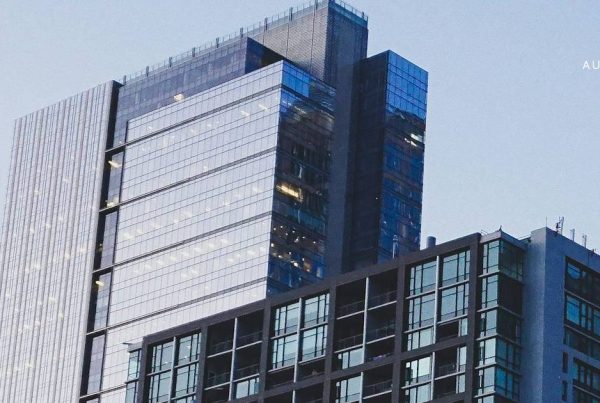Dubai Oversupply Myth: Why 90,000 New Units Won’t Crash the Property Market
For much of 2025, headlines have warned that “90,000 units” are set to flood Dubai’s property market, triggering an oversupply crisis and sharp price corrections. Talk of looming 20–30 per cent price drops has understandably made some investors cautious, with many considering a wait-and-see approach. However, when you move beyond the headlines and examine the underlying data, a different picture emerges. The oversupply narrative is largely built on contaminated numbers, unrealistic assumptions, and a simplified view of how supply and demand actually interact in Dubai.
Careful analysis of Dubai Land Department (DLD) data, cross-checked with project progress and market behaviour, shows that the market is more balanced and segmented than the “90,000 units” storyline suggests. For investors focused on key communities such as Dubai Marina, Business Bay and Downtown Dubai, the real risk lies less in oversupply and more in misreading the cycle.
Why the 90,000-Unit Figure Is Structurally Flawed
The starting point for most oversupply arguments is a headline number: around 90,000 units scheduled for delivery in a given year. This number is typically extracted from pipeline data without deeper classification. The issue is that the raw figure includes much more than standard residential apartments and villas. Within it are hotel apartments, short-stay serviced residences, staff accommodation blocks and commercial units that do not behave like typical end-user or investor stock.
Once these categories are stripped out and the focus is limited to true residential units, the projected handover volume falls significantly. For the remainder of 2025, the more accurate number is closer to about 42,000 genuine residential units. That alone is a substantial adjustment from the headline supply used to justify an “oversupply crisis”.
Delays Spread Deliveries Across Multiple Years
The second major flaw in oversupply forecasts is the assumption that all scheduled projects deliver exactly on time. Historical experience in Dubai suggests otherwise. Across multiple cycles, the market has seen average project delays of 6 to 18 months, with more complex or first-time developments frequently taking even longer to complete. Only a portion of the pipeline typically hands over according to its original schedule.
When even a conservative delay profile is applied to the pipeline, supply does not arrive as a single “wall” of 42,000 units in one calendar window. Instead, it is distributed across 2026, 2027 and 2028. This transforms the narrative from a sudden glut into a more manageable sequence of delivery waves, which the market can absorb through natural population growth, upgrading households and investor demand.
Not Every Delivered Unit Enters the Sales Market
Even if we accept the refined residential delivery figure, there is a further assumption embedded in most oversupply calls: that every completed unit comes onto the market as competing sales stock. In reality, buyers use properties in very different ways. Broadly, units tend to follow three paths after handover: some become owner-occupied homes, some enter the rental market, and some are listed for resale.
If, for illustration, 30 per cent of new handovers are retained for personal use, 40 per cent are placed into the rental market, and only 30 per cent are offered for resale, then a 42,000-unit delivery translates into around 12,600 units of additional direct sales competition. The balance either disappears from sales stock as end-user homes or contributes to rental supply. In areas with strong rental demand such as Jumeirah Village Circle, Dubai Hills Estate and other established communities, this rental absorption is meaningful and supports yields rather than undermining prices.
Demand Is About Households, Not Just Population
On the demand side, simplistic analysis often equates population growth with unit absorption. This ignores how people actually live. Not every new resident needs or can afford their own home, and most expatriates rent before they buy. Household formation depends on income, tenure, family size and job stability. In practice, multiple residents may share a single apartment, families may occupy one villa, and corporates may house many employees in staff accommodation.
When you translate population inflows into households, the number of units required each year looks very different from the headline population statistics. A reasonable household size assumption and a split between renters and buyers typically show that a large share of new demand first flows into the rental market. Many buyers in prime locations like Palm Jumeirah or MBR City are not new residents at all, but existing occupants upgrading or reallocating capital within Dubai.
What a Data-Driven View Means for Pricing and Strategy
When supply is cleaned, delayed realistically and adjusted for end-use, and when demand is expressed in terms of households and buyer behaviour rather than raw population, the picture becomes more balanced. Instead of a prolonged, severe glut, the outlook is more consistent with a healthy market cycle: periods of tightness, short windows of relative equilibrium at peak delivery, and renewed tightening as pipelines normalise and demand continues.
This is particularly evident in high-demand zones anchored by reputable developers such as Emaar, DAMAC and Sobha Realty. Quality projects in well-connected districts tend to see sustained interest from both investors and end-users, even during phases of elevated completions. Micro-market dynamics, project positioning and developer track record matter far more than headline supply numbers taken out of context.
How Investors Should Respond to the Oversupply Narrative
For sophisticated investors, the key takeaway is clear: headlines simplify; data clarifies. Rather than stepping back entirely based on generic oversupply concerns, it is more effective to differentiate between locations, asset classes and developer profiles. Some pockets may experience short-term pressure, particularly where speculative stock is concentrated. Others, especially established or infrastructure-rich communities, may continue to see resilient pricing and rental performance.
Ultimately, Dubai remains a structurally attractive market supported by population growth, lifestyle migration, regulatory transparency and strong rental yields. The question is not whether 90,000 units will “crash” the market, but where and how to position capital within a segmented, data-driven landscape.
For investors seeking to navigate Dubai’s next cycle using real numbers rather than noise, expert, location-specific guidance is essential. To explore opportunities across prime communities and understand how supply and demand truly interact in your target segment, connect with Aurantius Real Estate for tailored advisory and market insight.











